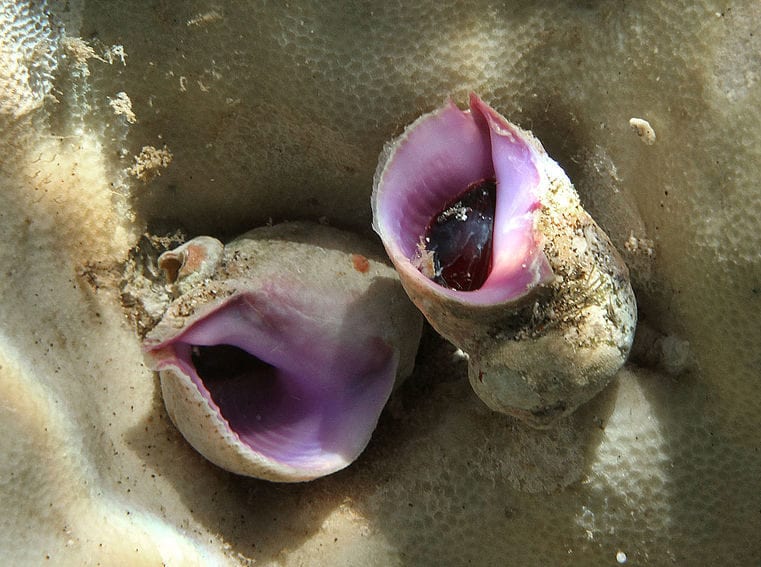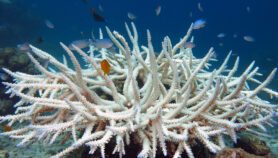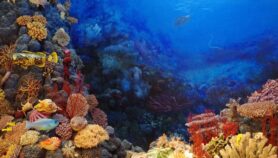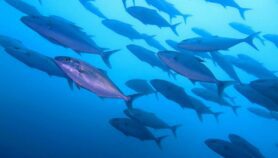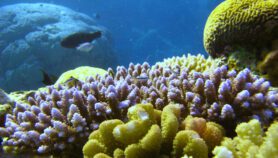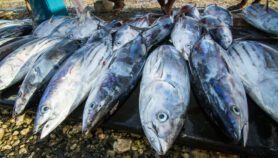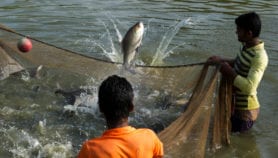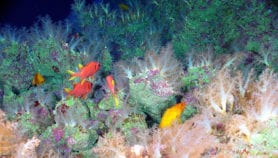By: Claudia Caruana
Send to a friend
The details you provide on this page will not be used to send unsolicited email, and will not be sold to a 3rd party. See privacy policy.
[NEW YORK] Overfishing may be encouraging the proliferation of coral-eating snails that are destroying reefs faster than pollution and warming oceans, says a study conducted off Fiji’s Coral Coast.
Coral reefs protect coastlines from wave action and storms, provide spawning grounds for valuable fish species and harbor diverse marine ecosystems. They act as carbon sinks by converting carbon dioxide — a greenhouse gas — into the calcium carbonate that make up coral skeletons. By fixing nitrogen, reefs help recycle the nutrients on which many marine organisms depend.
The study, published last month (July) in Ecological Applications by researchers from the Georgia Institute of Technology (Georgia Tech), Atlanta, found the Corralliophila violacea species of marine snails sucking the vital juices out of living coral.
“Predation of the snails was 220 per cent higher in the marine protected areas compared to unprotected areas”
Mark Hay, Georgia Institute of Technology
Importantly, the researchers found C. violacea proliferating in areas which are heavily fished — an activity that removes the natural predators of the coral-eating snail.
According to Mark Hay, professor at GTU’s School of Biological Sciences and Aquatic Chemical Ecology Centre, and author of the study, the damage caused by C. violacea went unnoticed because they “camouflage themselves on coral reefs and do not move about to leave obvious signs of their destructive behaviour”.
The snails “are vampire or tick-like in sucking out the vital juices of the coral”, Hay tells SciDev.Net.
In experiments conducted on the Coral Coast, Hay and his colleagues attached snails to coral branches and found that, over a three-week period, the snails reduced coral growth by 18—43 per cent, depending on snail size.
In areas protected from fishing, the snails were eaten by triggerfish and other fish species capable of cracking open snail shells. “Predation of the snails was 220 per cent higher in the marine protected areas compared to unprotected areas,” Hay says.
Hay believes that Fijian authorities could protect corals reefs from snails by introducing more stringent fishing controls on puffer fish, filefish and other predators of snails.
“Overfishing takes a lot of key species out, so that all you have left is the marine equivalent of cockroaches and dandelions,” says Hay.
Tai Chong Toh, lecturer, reef ecology laboratory, National University of Singapore, tells SciDev.Net that the study sheds new light on a coral predator. “Coral reefs are already under threat from climate change, fishing impacts, and pollution, and coral-eating snails exert more pressure on this fragile ecosystem.”“We don’t know if C. violacea is present in other reefs and in numbers that could endanger coral reefs,” Tai Chong Toh cautions.
This piece was produced by SciDev.Net’s Asia & Pacific desk.


